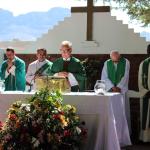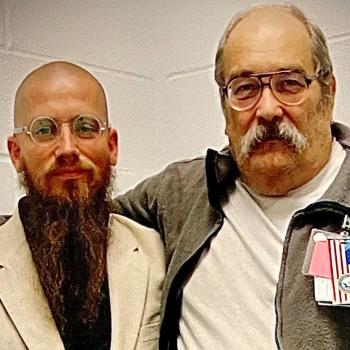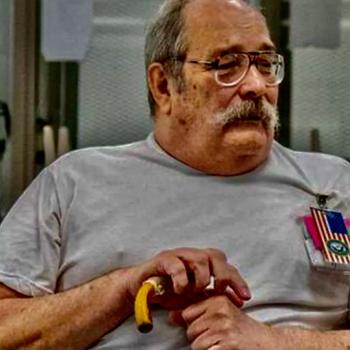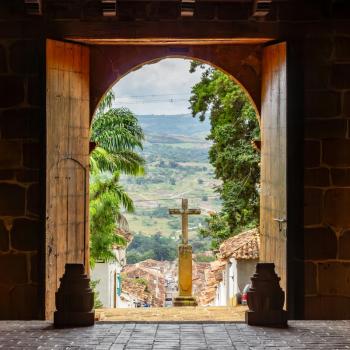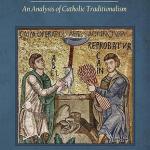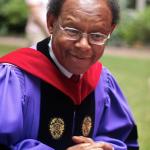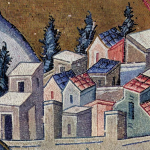The United Nations has declared February 11 to be the International Day of Women and Girls in Science. This caught my attention and made me think of several talented young Catholic women scientists at Caltech in Pasadena, California. I was inspired to learn a little about the life of the “mother of chemistry,” who was also a Catholic and an example of a woman in science.
If we ask a high school student to tell us who the father of chemistry is, we will likely hear the name Antoine Lavoisier; we would probably surprise this same student if we were to tell him that Lavoisier’s wife is known as the “mother of chemistry.”
This wonderful lady contributed something vital to the process of scientific discovery. Perhaps her role was a job that could only have been fulfilled well by a woman; namely, the role of solidifying a place for dialogue and research collaboration to accelerate scientific progress.
When she was young, Marie-Anne Paulze narrowly escaped marriage to a 50-year-old count, a man nearly four times her age. Her father defended her and chose another suitor whom he knew from the Ferme Générale, an French organization analogous to the IRS. Antoine Lavoisier was a nobleman with a sure income due to his position as a tax collector. He also had a penchant for scientific discussions and experiments. Upon becoming aware of his colleague’s daughter, Antoine found his way frequently to the Paulze household for romantic board games and discussions of geology, chemistry, and astronomy with the 13-year-old girl. Although their age difference was significant, their union was a happy one, both for the couple and for the history of chemistry.
Primary Chemistry Challenges
The challenges of chemistry brought them closer together: from the laboratory they set up while running the gunpowder of the country to in their own home, they worked together to explain chemical changes in the physical world such as combustion, respiration, and rusting. To explain the presence of heat during chemical changes, they explored together the since-discredited theory of phlogiston, a proposed element akin to fire which was related to the combustion of materials. Her proficiency in English and Latin allowed her to make research from around the world available to her husband and eventually led to their naming of oxygen gas.
It is somewhat remarkable that she was able to be so active in the field of chemistry, but this becomes more understandable when we take into account her artistic talents. After studying art with the renowned artist Jacques Louis David, she used her drawings to keep faithful records of the chemical laboratory equipment that she and her husband were using.
Her friendship with the artist led to the famous portrait that hangs in the Metropolitan Museum of New York immortalizing the relationship between Antoine and Marie-Anne Lavoisier. David shows the couple in their study, with Antoine seated with their chemistry instruments, and Marie-Anne standing attentively by his side. As in art so in life, as she was truly always by his side. Her artistic talents came in handy, producing precise drawings of their laboratory that spurred other scientists on to continue pushing forward to understand the fascinating world of chemistry. She contributed the scientific drawings for Lavoisier’s “Elementary Treatise on Chemistry,” a landmark text in the history of chemistry.
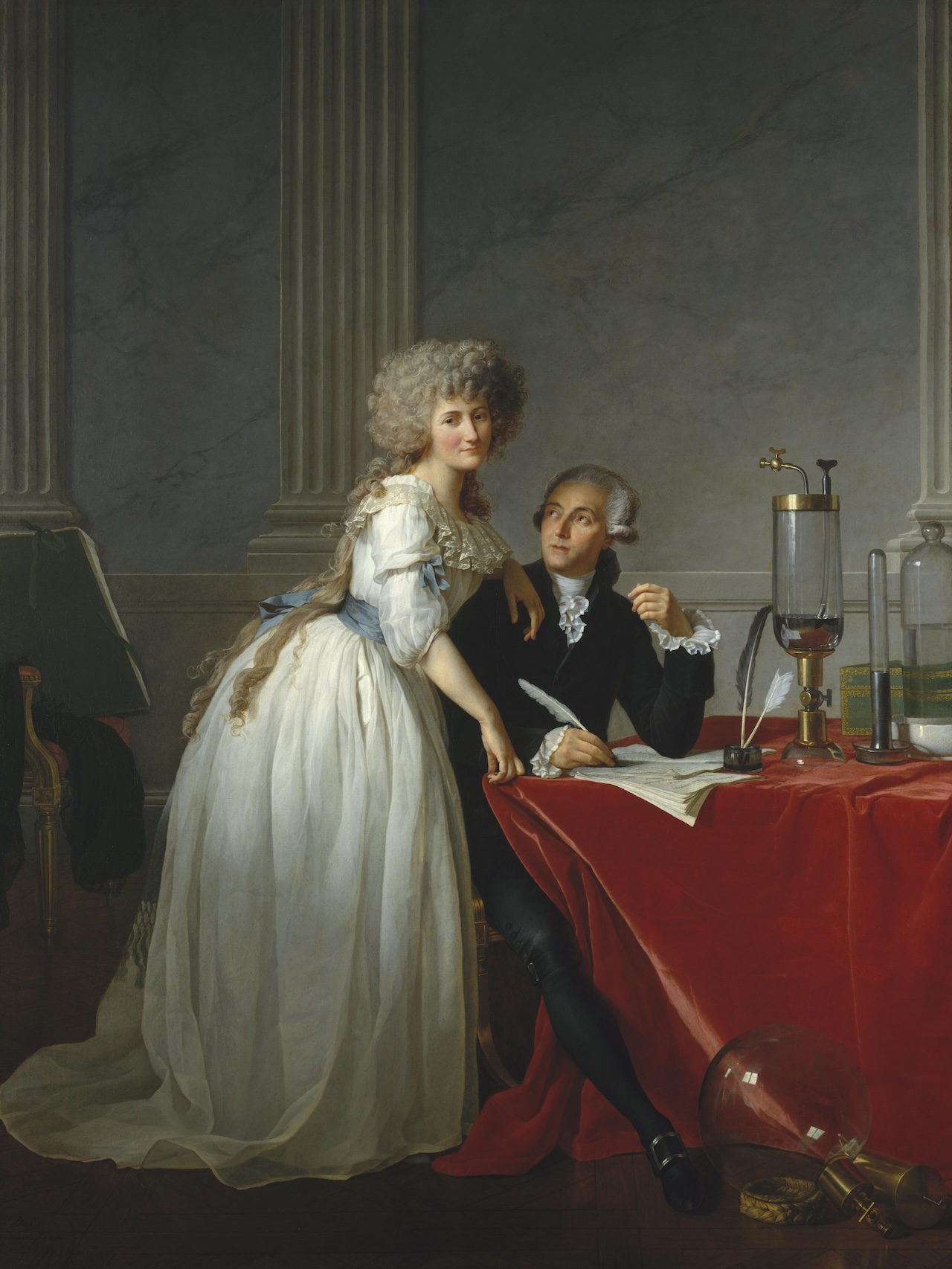
Fostering Dialogue
Lavoisier is remembered as a social woman who was continually hosting parties; however, “it is worth noting that in Paulze-Lavoisier’s daily life, sociability was not always an end it itself, but sometimes served as a means to promote her husband’s research.” (Francesca Antonelli, “Madame Lavoisier and the others: women in Marie-Anne Paulze-Lavoisier’s network (1771-1836)”)
Her record-keeping lent much of the scientific aspect to the research that she was completing with her husband. Their work was so intertwined that it is hard to attribute many contributions to one or the other definitively, and authors still attribute different roles to her. Was she simply a secretary or only a translator? Did her contribution lie more on the social side of things? Can we limit the value of her contribution to her incredible drawings? I think we can conclude that they were true scientific partners and that their accomplishments only reached magnificent greatness because of their collaboration. Her drawings give evidence to the true state of affairs; as some of her drawings represent her in the laboratory, and her handwriting has been found all throughout the Lavoisier laboratory notebooks. This seems to indicate that she was not just an active participant of the experiments they conducted, but likely even directed many of them. Her chemistry formation with some of her husband’s colleagues further points to her ability to direct experiments alongside her husband.
A Spiritual Side
After the death of her mother when she was a child, she had been raised in a convent. Her great love for learning came from those years in the convent, as evidenced by the complexity of themes she discussed with her future husband at the tender age of 13. Antoine Lavoisier’s faith was only re-kindled when he faced execution by the leaders of the French Revolution, but for Marie-Anne, her Catholic faith had always been deeply important to her, and she became increasingly involved in works of charity and mercy after the death of her husband. Her exploration of the natural world did not dull her taste for the spiritual realm, as she gave witness after Antoine’s death. For example, upon visiting her estate, researchers discovered evidence of her religious faith in the form of religious texts; among which was found the Bible, the Confessions of St. Augustine, moral and biblical essays, as well as the Imitation of Christ by Thomas a Kempis.
The Church and Science
“There cannot and must not be any opposition between faith and science.” (Pope Francis, 2 July 2021) For this ideal to become a reality, dialogue between experts in science and in the faith must be fostered. Beyond her very real contributions to the fields of chemistry, Madame Lavoisier’s capacity to bring scientists together in a spirit of true dialogue should serve as an example for us today. Silos appear easily among the various areas of knowledge, and. it is only through interdisciplinary dialogue that these silos may break down and knowledge may truly progress.
Often, the secular world seems to reach a consensus on the idea that the Church hates women. If we add to this misconception any contention between scientists and people of faith, it would be easy to imagine that there is no place in the Church for female scientists. However, this attitude is a gross error, and the Church invites us to interact with the world in a more nuanced and meaningful way. Women have something particular and unrepeatable to offer the world, and the field of science is no exception to this rule.
Before the Beijing Conference on Women, Pope John Paul II wrote a Letter to Women. He reminded us that
necessary emphasis should be placed on the “genius of women”, not only by considering great and famous women of the past or present, but also those ordinary women who reveal the gift of their womanhood by placing themselves at the service of others in their everyday lives. (Pope John Paul II, Letter to Women)
I can’t help but turn my attention once again to the exemplary young Catholic women scientists I know. They are navigating the tricky twists and turns of the academic world, while they are learning to live their Catholic faith as adults and figuring out life. As the U.N. invites us to celebrate women and girls in science today, we should celebrate in a special way those Catholic women who have been and currently are on the frontier of science and technology, harmonizing faith and science and giving glory to God through the discovery of the wonders of the world he created.
Subscribe to the newsletter to never miss an article.
Marriage Series
Temperament and How It Can Make Your Marriage Flourish




